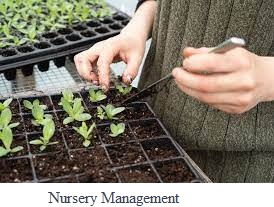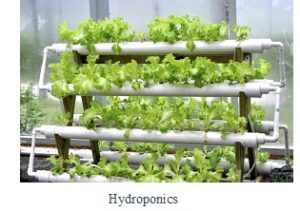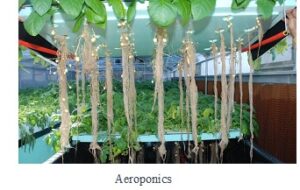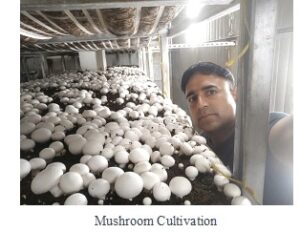
Home » Nursery Management: Best Practices for Growing Healthy Plants

Nursery management plays a crucial role in ensuring the success of agricultural operations. A well-managed nursery can provide healthy and vigorous seedlings that can withstand various biotic and abiotic stresses. In this blog, we will discuss some of the best practices for nursery management that can help growers produce high-quality plants and achieve optimal yields.
Conclusion: Nursery management is an essential aspect of agriculture that can impact plant health, productivity, and overall farm profitability. By following best practices for seed selection, soil preparation, irrigation, pest management, and disease control, growers can produce healthy and vigorous plants that can withstand various biotic and abiotic stresses.
Mushroom Cultivation:
Mushroom cultivation has become increasingly popular in recent years, as people look for new ways to grow their own food and explore sustainable agricultural practices. In this blog post, we will explore the basics of mushroom cultivation and provide some tips for those looking to get started.
In conclusion, mushroom cultivation can be a fun and rewarding hobby, as well as a sustainable source of food. By choosing the right species of mushroom, preparing the growing substrate, inoculating the substrate, incubating it, fruiting the mushrooms, and repeating the process, anyone can start growing their own delicious mushrooms at home.

Hydroponics:
Hydroponics is a unique method of growing plants without soil. It involves growing plants in a nutrient-rich solution that is delivered directly to the plant roots. This technique offers many advantages over traditional soil-based gardening, including better control over plant growth and yields, as well as more efficient use of water and fertilizers. In this blog post, we will explore the basics of hydroponics and its benefits.
In conclusion, hydroponics is a fascinating and innovative method of growing plants without soil. With its many advantages over traditional gardening, including better control over plant growth and yields, more efficient use of water and fertilizers, and the elimination of soil-borne pests, it is an excellent option for anyone interested in sustainable and efficient gardening.

Aeroponics:
Aeroponics is an innovative method of growing plants that involves suspending plant roots in a misted environment, rather than using soil or other growing media. In this blog post, we will explore the basics of aeroponics and its benefits.
In conclusion, aeroponics is a unique and innovative method of growing plants that offers many advantages over traditional soil-based gardening and other hydroponic growing methods. By suspending plant roots in a misted environment, plants can receive a constant supply of nutrients, water, and oxygen, leading to faster growth and higher yields. If you are interested in sustainable and efficient gardening, aeroponics is definitely worth considering.


From
April 21, 2023RECENT POSTS
CATEGORIES
TAGS
Agriculture Agriculture future AI Architecture artificial intelligence Bachelor of Commerce BA English BA Psychology BTech AIML BTech CSE BTech cybersecurity BTech Engineering Business management career Career-Specific Education career guide career option career scope Civil engineering commerce and management Computer Science Computer science engineering Data science degree education Engineering Engineering students English Literature english program Fashion Design Fashion design course Higher Education Journalism journalism and mass communication law Law career Machine Learning mathematics MBA MBA specialization Mechanical Engineering Pharmacy Psychology Research and Development students
University Address: Nachauli, Jasana Road, Faridabad, Haryana
For Admissions :
Toll Free: 1800-120-4613
Mobile : 8447744303 | 8447744304 | 8447744306 | 8447744309
8700003974 | 8700003411 | 8700003749
Address: C-72, Second Floor, Shivalik, Near Malviya Nagar,
Above HDFC Bank, New Delhi 110017
Landline No. - 011-46570515 / 45138169 / 41755703
Mobile No. - +91-7303152412 / +91-7303152420 / +91-9311321952
Jagmani Kutir, Ground Floor, Road No-1, Rajeev Nagar,
Near Darbar Marriage Hall, Patna-800024, Bihar
Contact No: 9818352069/ 8130120095
Mail: kanhaiya@lingayasvidyapeeth.edu.in
Copyrights © 1998 - 2025 Lingaya's Vidyapeeth (Deemed To Be University). All rights reserved.
It is important to note that the following email IDs and domains are fraudulent and do not belong to our university.
LV only conducts physical/online verification of any document related to examination on the following email id: